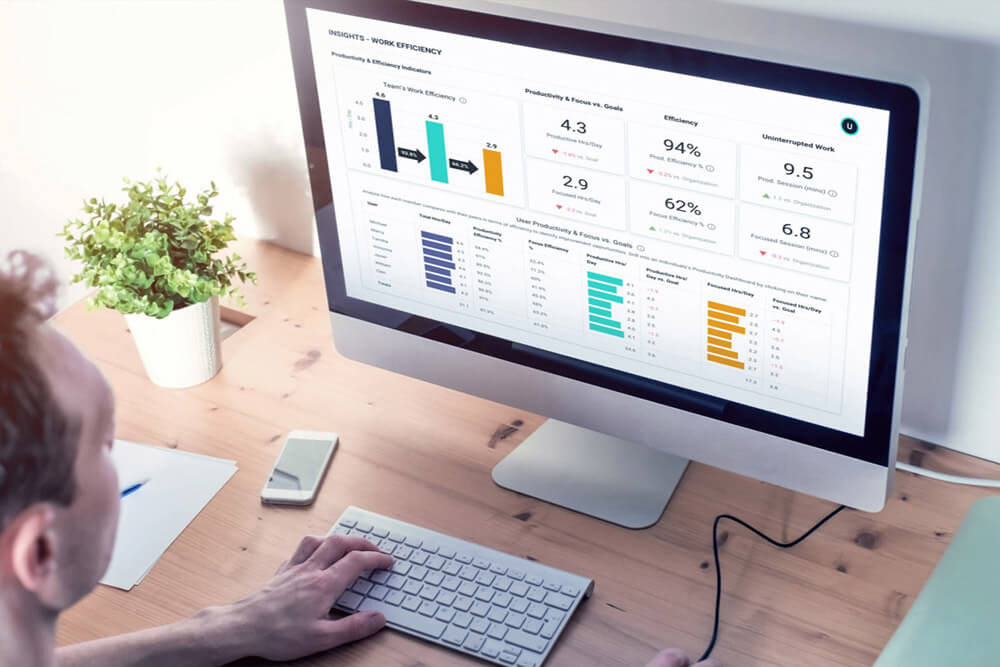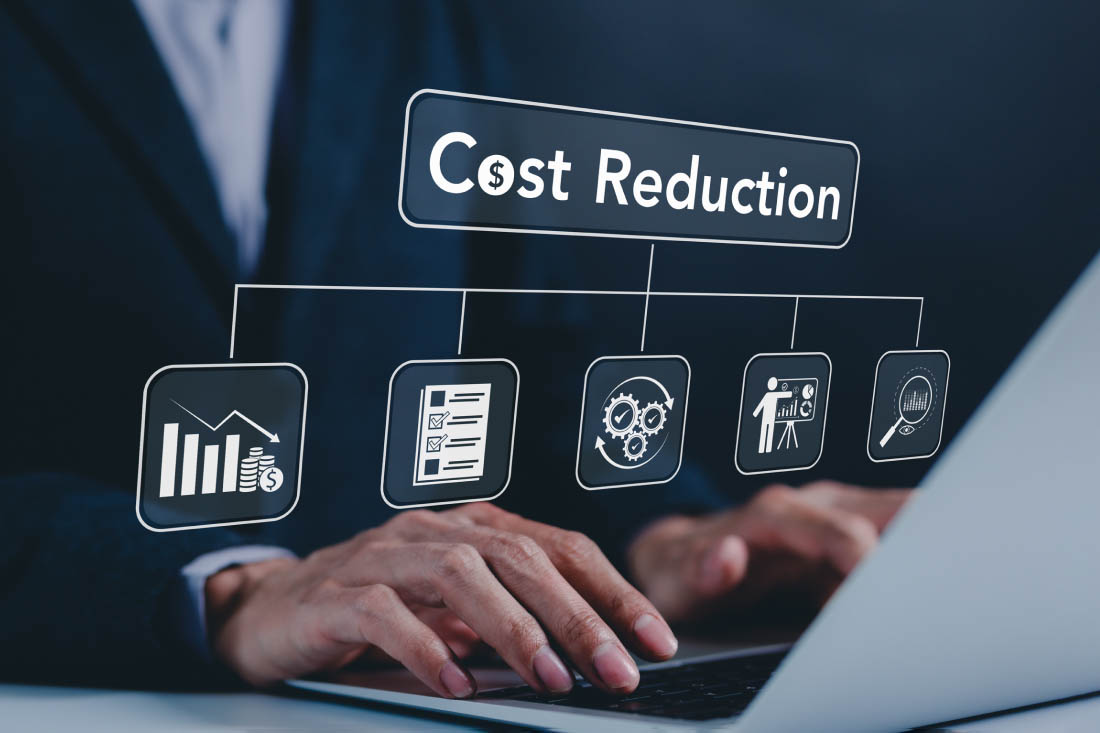Tracking employee efficiency metrics is a great way for managers to help employees work wiser and optimize workflows, all while improving their bottom line.
Employee efficiency is an employee’s ability to produce the largest amount of work in the shortest amount of time. However, unlike employee productivity which focuses exclusively on quantitative metrics and results, employee efficiency brings the quality of work into the equation. That means that for an employee to be efficient, they need to produce a large quantity of high-quality work. So, how can you get an accurate read on how efficient your teams are?
Employee efficiency metrics are a great place to start! They offer a data-driven way to understand how an employee works and how much they work and highlight improvement opportunities. Read on to learn everything you need to know about employee efficiency metrics, or skip straight to the section with the information you’re looking for:
- What are employee efficiency metrics?
- How to measure employee efficiency at work
- How can you increase employee efficiency?
- The benefits of employee efficiency metrics
- The most important employee efficiency metrics
- Start collecting employee efficiency metrics
What are employee efficiency metrics?
Employee efficiency metrics give you different ways to measure an employee’s efficiency to better understand how they work. Employee efficiency metrics go beyond what you might learn from annual performance reviews or one-on-one conversations by offering a data-driven approach to performance measurement.
How to measure employee efficiency
Since employee efficiency is a qualitative measure as opposed to a fully quantitative measure, it can be a bit tricky to measure. The key to measuring employee efficiency is determining benchmarks for quality of work and employee outputs.
To select an appropriate benchmark, consider what should be a standard level of effort that’s required to achieve a specific outcome. For example, if you’re a manager for an online publication, setting your benchmark could mean determining how many hours it should take to write a polished 1000-word article ready for publication. Once you have that, you can use data-driven productivity metrics to determine how long it actually takes for team members to achieve that outcome. Comparing current productivity levels to the benchmark can give you a measure of employee efficiency.
Of course, quality is always subjective and can vary from project to project. That’s why instead of using a raw calculation or single quality metric, it’s better to collect a variety of efficiency and productivity metrics that can help managers get a fuller picture of employee efficiency. By putting employee outputs into context, managers can get a more accurate measurement of employee performance at work which can be used for performance appraisals, forecasting, and strategic decisions.
How can you increase employee efficiency?
What you do to increase employee efficiency may vary from employee to employee. Still, these tried-and-true tips can help all team members work more efficiently and support organizational goals:
- Encourage scheduled breaks
- Promote a healthy work-life balance
- Implement flexible work hours
- Match employee skills to specific tasks
- Offer employee incentives
- Create stretch goals
Stretch goals are targets that individual employees aren’t required (or often even expected) to hit. Instead, these goals motivate them to go above and beyond in their work quantity and quality. To recall the earlier example, a stretch goal for the online publication might be to reach 15,000 readers in a month. That goal could include quantitative metrics and objectives that measure progress, like growing readership by 5% each week until the more reasonable goal of 10,000 readers is reached.
The benefits of employee efficiency metrics
Employee efficiency metrics offer numerous benefits to your teams and your organization as a whole. Some of the biggest benefits include:
Better decision making
Knowing you want to improve business performance isn’t enough — you need to know how you’ll do it. That’s where employee productivity metrics and efficiency metrics come in. These metrics provide the data you need to power initiatives that will improve employee efficiency and support business outcomes, helping you make decisions based on the most accurate information. Plus, with ongoing data collection on key performance indicators, you can see whether your initiatives are having their intended impact, and if they aren’t, you can make adjustments to achieve your performance goals.
Improved communication
One-on-one meetings, performance evaluations and regular 360-degree feedback sessions can help you understand individual performance across teams, but you shouldn’t stop there. The best way to make the most of those conversations is to have data points you can draw on to discuss how an employee works. Otherwise, you might find yourself making assumptions or lacking the specifics needed to point to areas of improvement. Efficiency metrics empower clearer, data-driven communication about individual goals and KPIs.
Increased accountability
When employees have their employee efficiency data at their disposal, they feel empowered to take responsibility for their individual performance and make improvements that will help them work wiser. It can even empower them to speak up about any issues they’re having that are interfering with their ability to work efficiently, whether those are competency issues due to poor onboarding or a lack of training programs, interpersonal matters that should be addressed with human resources, or anything in between. This then translates to more benefits down the line, including reduced absenteeism, higher employee retention, and more.
The most important employee efficiency metrics
There are many employee efficiency metrics worth tracking, but the most important ones fall into three categories: productivity metrics, quality metrics, and engagement metrics.
Productivity
Productivity metrics are data points that indicate whether or not you’re meeting your organization’s productivity baselines. They’re helpful for tracking, managing, and supporting your employee’s performance.
Within this category, take note of Utilization Levels. Utilization Levels measure workload balance and help you see which employees are overutilized and at risk of burnout or underutilized and able to take on more tasks. It’s not uncommon for employees to work long hours and sacrifice their work-life balance, but managers aren’t able to help if they don’t have insight into utilization. Tracking this employee efficiency metric empowers managers to intervene, rebalancing workloads and providing additional support to ensure employees aren’t overworked.
In addition to Utilization Levels, other key productivity metrics include:
- Productive Hrs/Day
- Productivity Efficiency Percentage
- Productive Session (Minutes)
- Average Daily Productivity
- Focused Hrs/Day
- Focused Session (Minutes)
- Focus Efficiency Percentage
- Productive Time Composition: Focus, Collaboration, Multitasking
Quality
Quality metrics are a little harder to come by, but they still play a critical role in performance management. When measuring employee efficiency, remember that quality is more important than quantity.
Use benchmarks to determine what counts as high-quality work for your team. Also, consider what percentage of an employee’s work needs to be redone entirely or substantially reworked. That indicates that the quality of work is low no matter how much is produced. If metrics show that a lot of work product doesn’t meet your quality benchmarks, it indicates that one-on-one intervention is needed.
Engagement
Engaged employees are more productive, efficient, and committed to supporting your enterprise’s organizational goals. You might think that employee engagement is entirely subjective and can’t be reliably measured, but collecting data on engagement by using a workforce analytics solution reveals the metrics you need. Here are a few engagement KPIs to keep an eye on:
- Workload Balance
- Benchmarks and Goals
- Employee Absenteeism Rate
- Employee Turnover Rate
- Employee Retention Rate
- Employee Satisfaction Rates
- Employee Net Promoter Score (eNPS)
Start collecting employee efficiency metrics
To improve employee efficiency, increase employee productivity, and boost retention, you have to start with the right metrics. ActivTrak’s Workplace Efficiency solution makes taking a data-driven approach to employee efficiency simple. With this tool, you can dig into the employee efficiency metrics listed above and uncover data-driven insights that will help your teams work wiser. Measure employee efficiency metrics across teams, set benchmarks, identify which employees might be under or overutilized, and more.
Request a demo today to learn more about how ActivTrak can help increase your organization’s employee efficiency.





